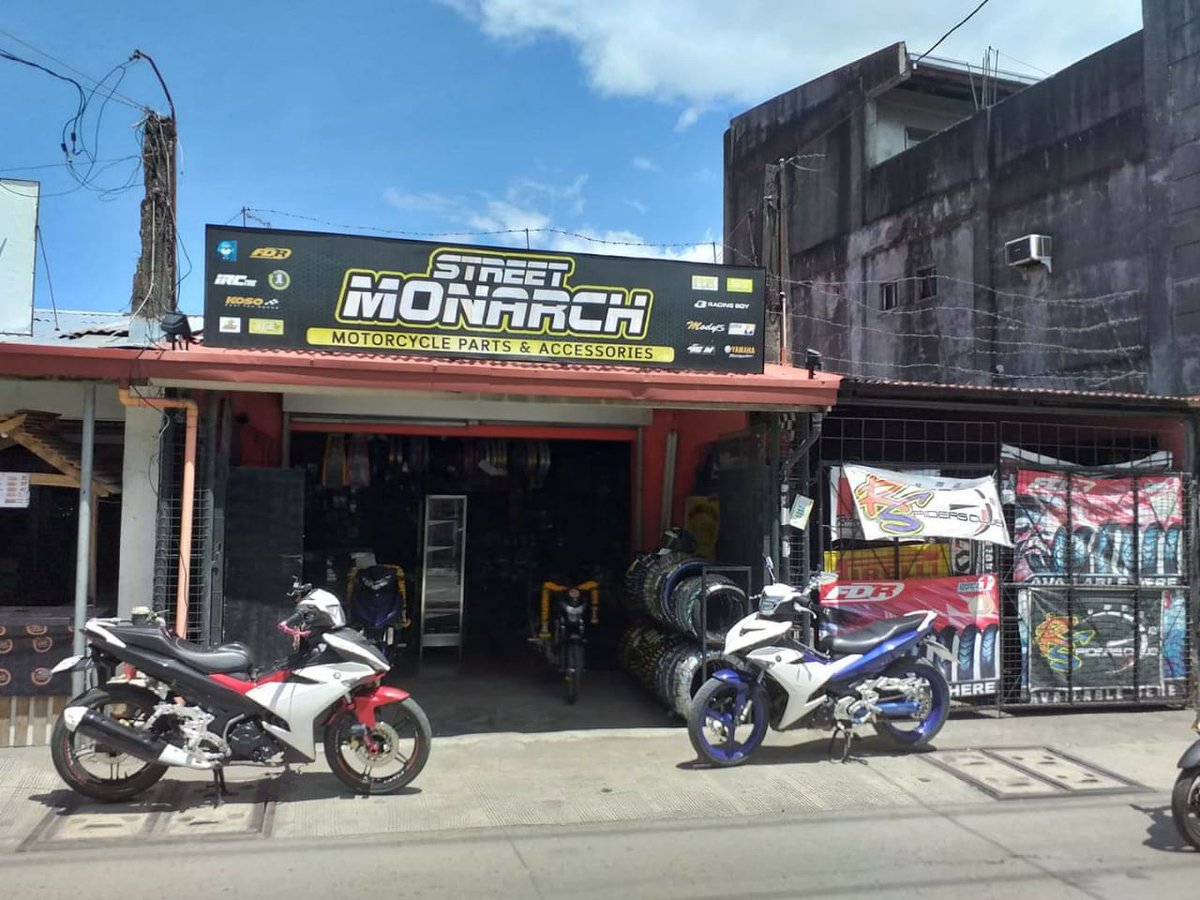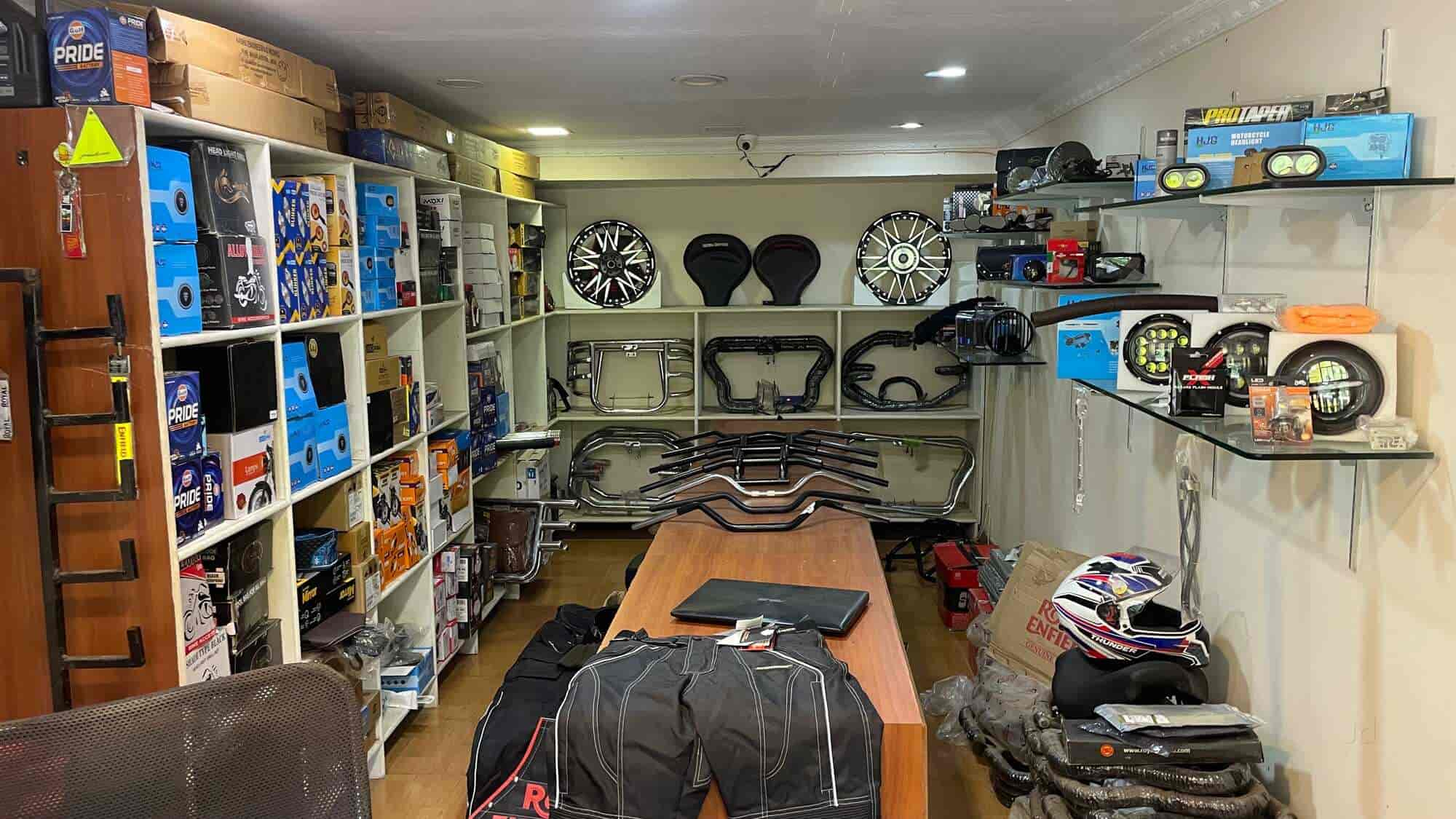Your Go-To Motorbike Shop for Top Quality Parts and Accessories
Your Go-To Motorbike Shop for Top Quality Parts and Accessories
Blog Article
Recognizing the Vital Parts of a Motorcycle: A Comprehensive Overview for Fanatics
For motorcycle enthusiasts wanting to raise their riding experience and ensure their bikes run efficiently, recognizing the necessary elements of a bike is extremely important. Each element, from the engine's complex operations to the critical duty of the braking devices, not only influences efficiency but additionally safety and comfort. This overview will go through the basic components that every rider ought to recognize with, making it possible for notified choices in both maintenance and prospective upgrades. As we start this expedition, one must ask: how does each component communicate to produce the seamless adventure every fanatic looks for?
Engine Elements

The camshaft plays a critical role in controlling the timing of the engine's shutoffs, making sure the exact opening and closing necessary for reliable fuel and air intake, as well as exhaust expulsion. This timing is vital to maintaining ideal engine performance and performance. Furthermore, the carburetor or gas injection system, depending upon the bike design, is liable for blending air with fuel in the right ratio for combustion.
The cooling system, either air or liquid-based, functions to maintain the engine's temperature level within operational limits, avoiding getting too hot and ensuring durability - motocross gear. Each part, meticulously developed and integrated, adds to the seamless operation of the engine, specifying the motorcycle's power outcome and overall performance
Transmission System
Essential to the motorbike's capability, the transmission system makes sure reliable power transfer from the engine to the wheels. This system comprises numerous critical elements, consisting of the clutch, transmission, and last drive, each playing an essential role in converting the engine's power right into activity. The clutch, typically operated by a hand bar, offers to involve and disengage the engine from the transmission, enabling smooth gear changes and controlled acceleration.
The transmission, commonly referred to as the transmission proper, contains a set of equipments that cyclists can manually change through to readjust the bike's rate and torque result. These equipments are set up in a sequence that allows the motorbike to speed up smoothly and preserve ideal engine efficiency throughout different speeds. The majority of bikes use a consecutive gearbox, needing the cyclist to change gears in a fixed order.
Braking Mechanisms
While understanding the transmission system is key to utilizing a bike's power, similarly essential is the capability to control and stop that power properly, which is where braking systems come into play. Brakes are vital for safety and security and efficiency, supplying the biker with the required control to navigate various terrains and problems. Generally, motorcycles feature 2 kinds of braking systems: disc brakes and drum brakes.
Disc brakes are much more common in modern-day motorcycles as a result of their superior efficiency. They consist of a brake disc, caliper, and pads. When turned on, the caliper presses the brake pads versus the rotating disc, transforming kinetic energy right into warm, consequently slowing the wheel. This system offers much better heat dissipation, constant performance, and enhanced stopping power, especially in wet conditions.
On the other hand, drum brakes, though much less typical, are still located in some motorcycles. They function by pressing brake footwear versus the internal surface area of a drum connected to the wheel. While typically much less reliable in warmth dissipation and quiting power, drum brakes are simpler and extra affordable.
Recognizing these braking systems' nuances enables cyclists to keep their bikes appropriately and value the engineering that ensures risk-free and reliable quiting.
Suspension and Steering
Suspension and guiding systems are essential parts that dramatically influence a bike's handling and trip convenience. The suspension system, including forks at the front and shock absorbers at the rear, soaks up road irregularities, boosting security and control. Front forks, typically telescopic or inverted, compress and rebound to mitigate effects, while rear shock absorbers preserve tire contact with the roadway, vital for grip and safety and security.
Guiding, centered around the handlebars, links the biker to the motorbike's directional control. The steering head bearings ensure smooth operation, enabling accurate maneuverability. Correct placement and upkeep of these bearings are crucial for foreseeable steering reaction and decreasing biker fatigue.
The suspension's adjustability is an additional vital aspect; preload, damping, and rebound settings permit personalization to fit various riding styles and problems. This versatility is necessary for enhancing performance, whether navigating city streets or taking on tough trails. Technologies like electronic suspension systems offer real-time adjustments, boosting adventure high quality throughout diverse terrains.

Electric Solutions
After making certain a regulated and smooth trip via efficient suspension and guiding systems, attention transforms to the i thought about this electrical systems, a crucial element of modern-day motorcycles. These systems play a crucial function not just in starting the engine however additionally in powering different parts that enhance the performance and safety of the bike.
At the heart of a motorcycle's electrical system is the battery, which shops electric energy essential for starting the engine and powering complementary systems - motocross gear. The generator or generator, coupled with the rectifier-regulator, makes certain the battery remains billed while the bike functions, transforming mechanical power right into electric energy and preserving voltage degrees
The ignition system, one more essential element, is in charge of firing up the air-fuel blend in the engine's cyndrical tubes. Modern bikes commonly use an electronic ignition system, offering higher effectiveness and dependability contrasted to typical systems.
Illumination systems, consisting of fronts lights, tail lights, and indications, are also vital, ensuring visibility and safety for the rider. Additional electronic elements such as sensors, control units, and displays contribute to advanced features like fuel injection monitoring, anti-lock braking systems (ABDOMINAL), and digital dashboards, even more improving the riding experience.
Conclusion
A complete understanding of a motorbike's important parts, consisting of the engine, transmission system, braking mechanisms, suspension, guiding, and electric systems, is vital for lovers intending to maximize convenience, performance, and safety. Proficiency of these aspects enables notified decisions pertaining to upkeep and upgrades, ultimately improving the riding experience. By incorporating this knowledge, riders can guarantee their bikes run at peak effectiveness and reliability, therefore optimizing both pleasure and durability of their cars.
For motorcycle lovers looking to boost their riding experience and ensure their bikes run smoothly, recognizing the essential parts of a motorbike is vital.Integral to the motorcycle's capability, the transmission system guarantees reliable power transfer from the engine to the wheels.While understanding the transmission system is crucial to using a motorcycle's power, similarly essential is the capacity to regulate and stop that power effectively, which is where stopping devices come right into play. Typically, motorcycles feature 2 types of braking systems: disc brakes and drum brakes.
A thorough comprehension of motorcycle stand with wheels a motorbike's essential parts, including the engine, transmission system, braking devices, suspension, guiding, and electric systems, is essential for enthusiasts Visit This Link aiming to optimize performance, safety and security, and comfort.
Report this page